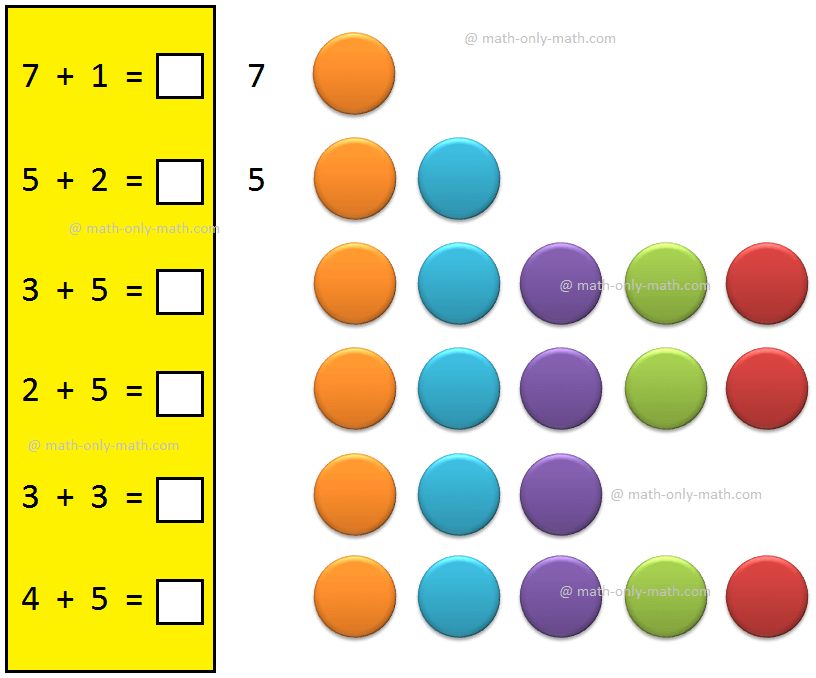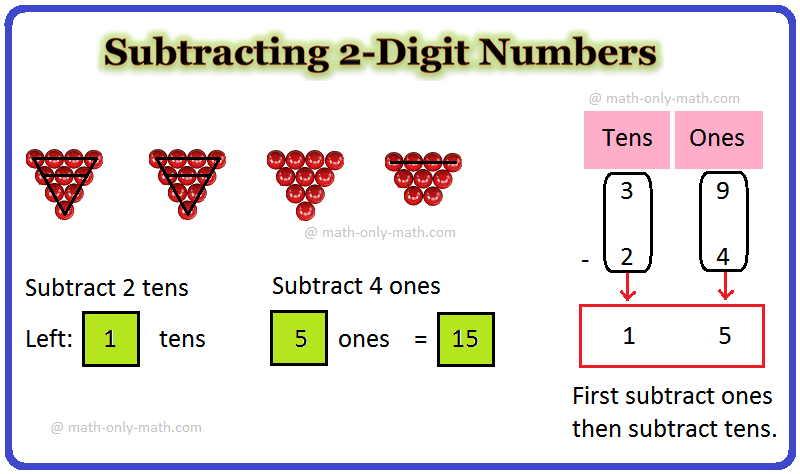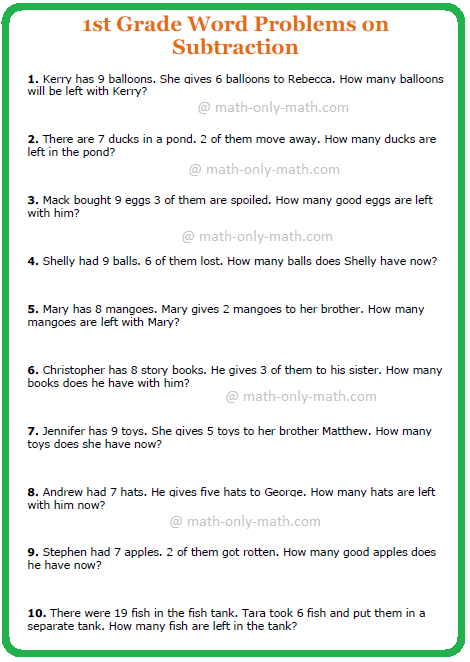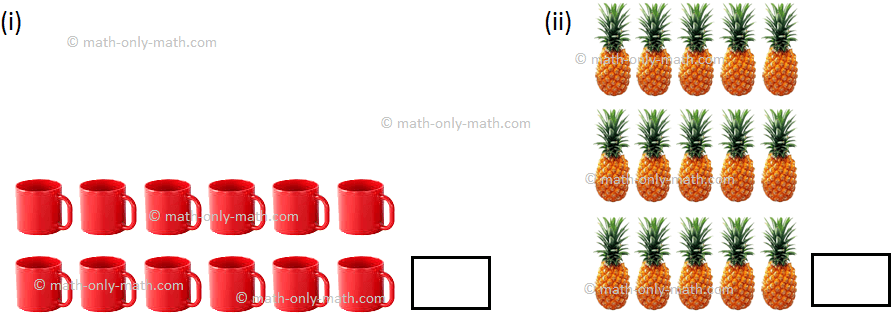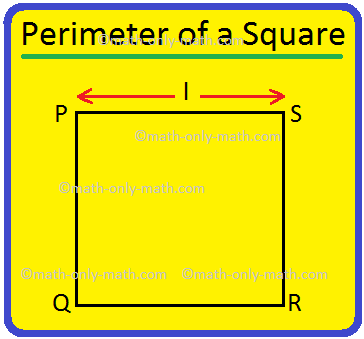Rational Numbers Between Two Unequal Rational Numbers
As we know that rational numbers are the numbers which are represented in the form of p/q where ‘p’ and ‘q’ are integers and ‘q’ is not equal to zero. So, we can call rational numbers as fractions too. So, in this topic we will get to know how to find rational numbers between two unequal rational numbers.
Let us suppose ‘x’ and ‘y’ to be two unequal rational numbers. Now, if we are told to find a rational number lying in the mid- way of ‘x’ and ’y’, we can easily find that rational number by using the below given formula:
\(\frac{1}{2}\)(x + y), where ‘x’ and ‘y’ are the two unequal rational numbers between which we need to find the rational number.
Rational numbers are ordered, i.e., given two rational numbers x, y either x > y, x < y or x = y.
Also, between two rational numbers there are infinite number of rational numbers.
Let x, y (x < y) be two rational numbers. Then
\(\frac{x + y}{2}\) - x = \(\frac{y - x}{2}\) > 0; Therefore, x < \(\frac{x + y}{2}\)
y - \(\frac{x + y}{2}\) = \(\frac{y - x}{2}\) = \(\frac{y - x}{2}\) > 0; Therefore, \(\frac{x + y}{2}\) < y.
Therefore, x < \(\frac{x + y}{2}\) < y.
Thus, \(\frac{x + y}{2}\) is a rational number between the rational numbers x and y.
For understanding it much better let us have a look at some of the below mentioned examples:
1. Find a rational number lying mid- way between \(\frac{-4}{3}\) and \(\frac{-10}{3}\).
Solution:
Let us assume x = \(\frac{-4}{3}\)
y = \(\frac{-10}{3}\)
If we try to solve the problem using formula mentioned above in the text, then it can be solved as:
\(\frac{1}{2}\){( \(\frac{-4}{3}\))+ (\(\frac{-10}{3}\))}
⟹ \(\frac{1}{2}\){( \(\frac{-14}{3}\))}
⟹ \(\frac{-14}{6}\)
⟹ \(\frac{-7}{6}\)
Hence, (\(\frac{-7}{6}\)) or (\(\frac{-14}{3}\)) is the rational number lying mid- way between \(\frac{-4}{3}\)and \(\frac{-10}{3}\).
2. Find a rational number in the mid- way of \(\frac{7}{8}\) and \(\frac{-13}{8}\)
Solution:
Let us assume the given rational fractions as:
x = \(\frac{7}{8}\),
y = \(\frac{-13}{8}\)
Now we see that the two given rational fractions are unequal and we have to find a rational number in the mid- way of these unequal rational fractional. So, by using above mentioned formula in the text we can find the required number. Hence,
From the given formula:
\(\frac{1}{2}\)(x + y) is the required mid- way number.
So, \(\frac{1}{2}\){ \(\frac{7}{8}\)+ (\(\frac{-13}{8}\))}
⟹ \(\frac{1}{2}\)( \(\frac{-6}{8}\))
⟹ \(\frac{-6}{16}\)
⟹ (\(\frac{-3}{8}\))
Hence, (\(\frac{-3}{8}\)) or (\(\frac{-6}{16}\)) is the required number between the given unequal rational numbers.
In the above examples, we saw how to find the rational number lying mid- way between two unequal rational numbers. Now we would see how to find a given amount of unknown numbers between two unequal rational numbers.
The process can be better understood by having a look at following example:
1. Find 20 rational numbers in between (\(\frac{-2}{5}\)) and \(\frac{4}{5}\).
Solution:
To find 20 rational numbers in between (\(\frac{-2}{5}\)) and \(\frac{4}{5}\), following steps must be followed:
Step I: (\(\frac{-2}{5}\)) = \(\frac{(-2) × 5}{5 × 5}\) = \(\frac{-10}{25}\)
Step II: \(\frac{4 × 5}{5 × 5}\) = \(\frac{20}{25}\)
Step III: Since, -10 < -9 < -8 < -7 < -6 < -5 < -4 ...… < 16 < 17 < 18 < 19 < 20
Step IV: So, \(\frac{-10}{25}\) < \(\frac{-9}{25}\) < \(\frac{-8}{25}\) < …… < \(\frac{16}{25}\) < \(\frac{17}{25}\) < \(\frac{18}{25}\) < \(\frac{19}{25}\).
Step V: Hence, 20 rational numbers between \(\frac{-2}{5}\) and \(\frac{4}{5}\) are:
\(\frac{-9}{25}\), \(\frac{-8}{25}\), \(\frac{-7}{25}\), \(\frac{-6}{25}\), \(\frac{-5}{25}\), \(\frac{4}{25}\) ……., \(\frac{2}{25}\), \(\frac{3}{25}\), \(\frac{4}{25}\), \(\frac{5}{25}\), \(\frac{6}{25}\), \(\frac{7}{25}\), \(\frac{8}{25}\), \(\frac{9}{25}\), \(\frac{10}{25}\).
All the questions of this type can be solved using above steps.
Rational Numbers
Decimal Representation of Rational Numbers
Rational Numbers in Terminating and Non-Terminating Decimals
Recurring Decimals as Rational Numbers
Laws of Algebra for Rational Numbers
Comparison between Two Rational Numbers
Rational Numbers Between Two Unequal Rational Numbers
Representation of Rational Numbers on Number Line
Problems on Rational numbers as Decimal Numbers
Problems Based On Recurring Decimals as Rational Numbers
Problems on Comparison Between Rational Numbers
Problems on Representation of Rational Numbers on Number Line
Worksheet on Comparison between Rational Numbers
Worksheet on Representation of Rational Numbers on the Number Line
From Rational Numbers Between Two Unequal Rational Numbers to HOME PAGE
Didn't find what you were looking for? Or want to know more information about Math Only Math. Use this Google Search to find what you need.
Recent Articles
-
Adding 1-Digit Number | Understand the Concept one Digit Number
Apr 26, 24 01:55 PM
Understand the concept of adding 1-digit number with the help of objects as well as numbers. -
Subtracting 2-Digit Numbers | How to Subtract Two Digit Numbers?
Apr 26, 24 12:36 PM
In subtracting 2-digit numbers we will subtract or minus a two-digit number from another two-digit number. To find the difference between the two numbers we need to ‘ones from ones’ and ‘tens from -
1st Grade Word Problems on Subtraction | Subtracting 2-Digit Numbers
Apr 26, 24 12:06 PM
In 1st grade word problems on subtraction students can practice the questions on word problems based on subtraction. This exercise sheet on subtraction can be practiced by the students to get more ide… -
Subtracting 1-Digit Number | Subtract or Minus Two One-Digit Number
Apr 26, 24 11:21 AM
In subtracting 1-digit number we will subtract or minus one-digit number from one-digit number or one-digit number from 2-digit number and find the difference between them. We know that subtraction me… -
Perimeter of a Square | How to Find the Perimeter of Square? |Examples
Apr 25, 24 05:34 PM
We will discuss here how to find the perimeter of a square. Perimeter of a square is the total length (distance) of the boundary of a square. We know that all the sides of a square are equal. Perimete…

